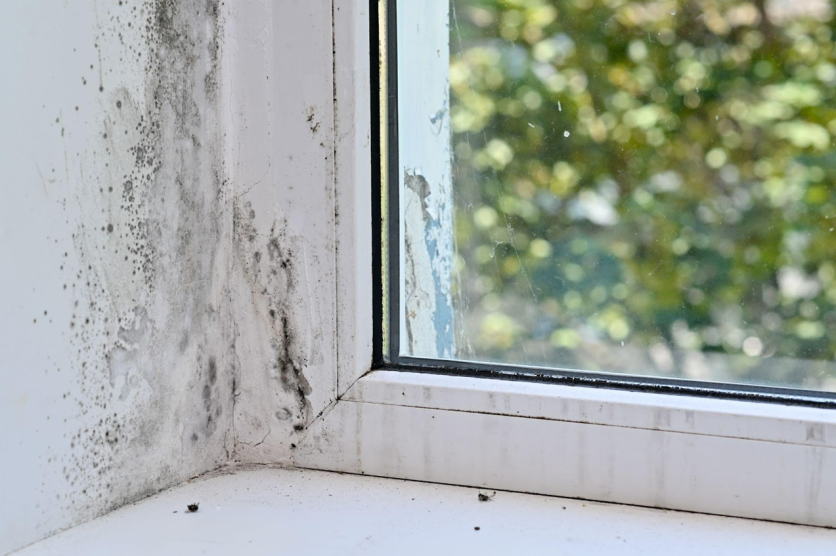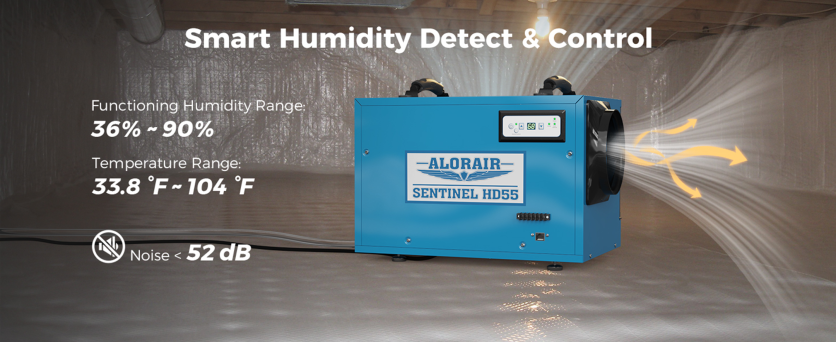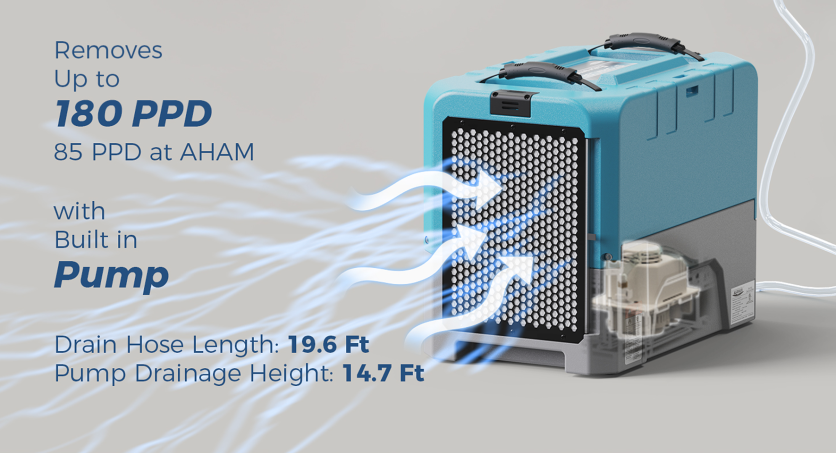In a time of record humidity across the United States and some of the wettest months of the year, reducing indoor moisture levels is vital for maintaining both a healthy home and a wholesome life. In the past year alone, mold-induced illness caused by a lack of proper indoor humidity control cost Americans more than $17 billion in medical expenses, according to the federally funded Berkeley Lab. As 2025 brings decades-long records for humidity in major parts of the American South, Midwest, Northeast, and parts of California, experts say it's more important than ever to keep indoor moisture at bay.

A Perfect Storm for Moisture
As climate change drives heavier rainfall and stronger storms, moisture is more widespread. A storm-soaked house in Florida can sprout mold within 48 hours, while intense downpours from Texas to New York can leave behind damp conditions capable of growing mold within 54 hours. In North Carolina, news investigations found indoor mold and fungi proliferating as high as the Appalachian Mountains in the months following Hurricane Helene.
Mold isn't just an eyesore; it's a threat that causes both structural damage and health problems. Research suggests mold affects roughly half of all houses nationwide and that nearly 75% of homes in Florida have problems with excess indoor moisture, followed closely by other humid states, including North Carolina, Georgia, Texas, and California.
The health and financial stakes of indoor mold are significant. Breathing in moldy air increases the chance of respiratory illnesses such as asthma, cough, wheezing, sore throat, runny nose, hay fever, and bronchitis by up to 70%, according to the Berkeley Lab. Cleaning a serious mold infestation isn't cheap, either: the average cost of professional removal is about $3,500. That's in addition to expenses for water damage or ruined furniture.
Americans Turn to Tech for Dry Homes
U.S. residents have long trusted the dehumidifier, a machine that pulls moisture from the air to keep indoor humidity at a healthy level, for protection. Demand for home dehumidifiers has surged in recent years, from about $1.1 billion in 2024 to a projected $1.9 billion by 2034. Analysts cite persistently humid climates, greater health awareness, and new smart-home features in these devices as driving factors.
But today's dehumidifiers are a far cry from the roaring, energy-guzzling boxes of decades past. Modern models are quieter, more efficient, and often Wi-Fi-enabled for homeowners to check levels and adjust settings directly from their phones. Some high-capacity dehumidifiers can remove up to 190 pints of water from the air per day while still using significantly less electricity than older units.
Innovation on the Front Lines
AlorAir, a professional provider of dehumidification services, was founded in 2012. The brand has served over 1.2 million customers and holds more than 200 global technology patents. Several of its models carry the EPA's Energy Star Most Efficient label, which leads to hundreds of dollars in energy savings per year.
AlorAir's lineup ranges from portable units for apartments to industrial machines for flood recovery. The Sentinel series is compact and small, making it highly suitable for confined spaces. As an example, the AlorAir Sentinel HD55 boasts a user-friendly design most suitable for basements and crawl spaces, with a dehumidification capacity capable of reaching 113 pints. Its Wi-Fi & Bluetooth App Version also makes its operation more convenient and intelligent.

When Mother Nature strikes, AlorAir's heavy-duty Storm series dehumidifiers, such as the AlorAir Storm LGR Extreme, can maintain high-level performance in temperatures as low as 33.8 degrees Fahrenheit. As one of the most compact heavy-duty commercial dehumidifiers pulling up to 180 pints of water per day from the air, AlorAir Storm LGR Extreme has become an ideal choice for drying out flooded basements.

Even the U.S. government recognizes the value of dehumidifiers. The Federal Emergency Management Agency (FEMA) offers programs to reimburse homeowners for dehumidifiers after floods, hurricanes, and select other natural disasters, reinforcing just how critical indoor moisture control is to recovery. Across storm-battered regions of Florida, the Carolinas, and Texas, dehumidifiers such as AlorAir have become standard equipment to salvage soaked homes and prevent mold.
Americans are using them increasingly in everyday life, too. Running a unit in a muggy garage or damp basement long before mildew appears helps save money on the back end.
A Dry Home Is a Smart Investment
As climate change brings increasingly extreme weather and high humidity across certain parts of the country, keeping a dry home is an essential safeguard. It's especially important for people on tight budgets who can't afford to splurge on costly repairs. A reliable dehumidifier is a relatively small investment compared to the thousands in damage unchecked moisture can cause.
Thanks to innovations from professional air management equipment companies like AlorAir, these units are also getting smarter and more accessible with each passing day.
ⓒ 2025 TECHTIMES.com All rights reserved. Do not reproduce without permission.




